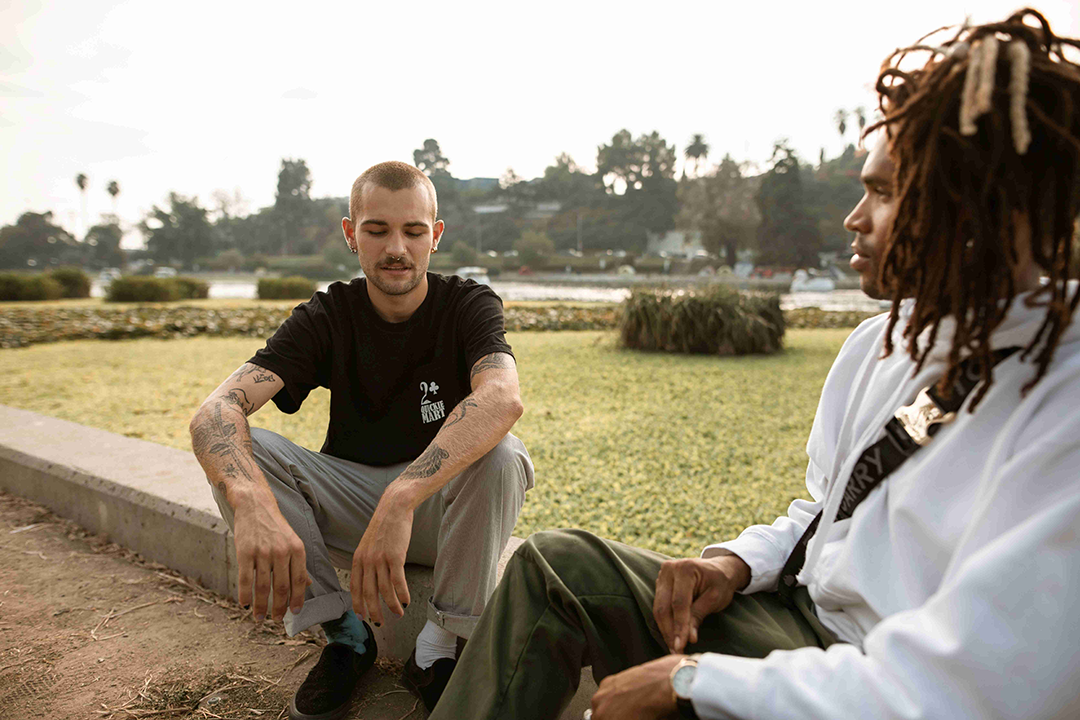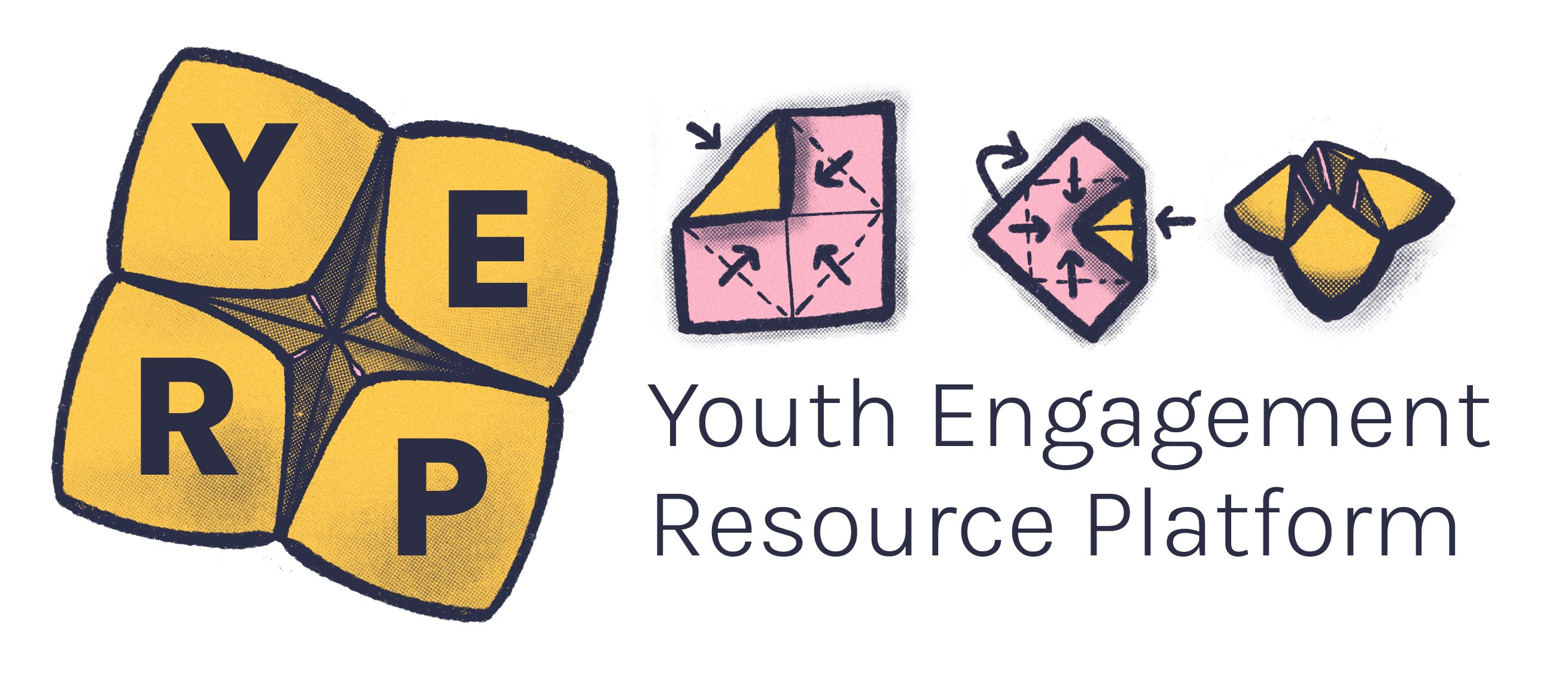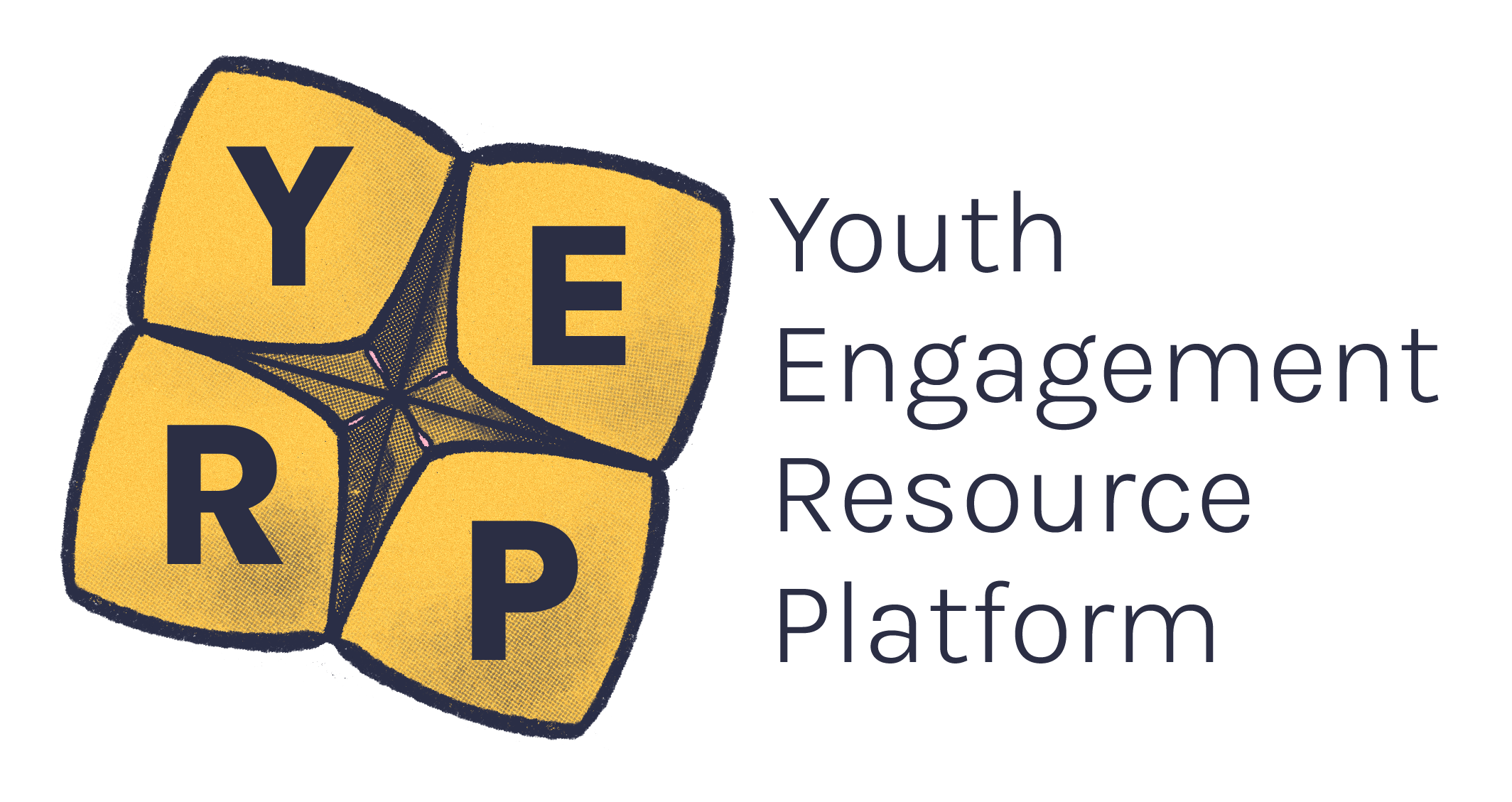Boundaries are the behaviours we consider acceptable, and how we as individuals and organisations ensure these expected behaviours are upheld.
Your work with young people should be informed by a Code of Conduct and/or a Child Safe Code of Conduct. These documents should provide you with easy-to-understand rules about behaviour that demonstrates your organisation’s values and culture.1
Appropriate and inappropriate behaviour should be detailed, so you understand what’s expected of you. The Code of Conduct should also explain what will happen if a breach occurs.1
The New South Wales Government has developed a helpful guide to developing a child safe Code of Conduct.2
Professional boundaries are key to ethical practice with young people and impact both the young person and the youth worker. It can seem challenging to set boundaries in a field where the work is relationship-based, and where care and human rights approaches are central. But, setting clear boundaries will help prevent burnout and support you in defining your role in a young persons’ life.3
Remember, setting boundaries is a form of self-care and is important for the safety of the young person and yourself.
A photo of a man smiling with city buildings and hedges in the background.

- Clear communication: communicate your role, responsibilities, and the purpose of your interaction with young people. Discuss and set expectations for appropriate behaviour and boundaries according to your workplaces’ policies.3
- Define your role: clearly define your role and the type of support you can provide.3
- Sharing personal information with purpose: consider the intention of sharing information. Oversharing can create an unsafe environment for the young person where they feel responsible for your wellbeing, or overburdened when they don’t have the capacity to support you.
It’s never acceptable for youth workers to have conversations about their or the young person’s sex life.4 You’re their youth worker, not their friend.
Youth workers must realise the relationship between themselves and a young person is a professional relationship that will remain within professional boundaries, therefore non-sexual and limited. In Australia there are specific legal restrictions relating to adult sexual conduct with young people which youth workers need to fully understand.
If professional boundaries are not respected, a relationship with a young person may become exploitative and have negative effects on them. Youth workers need to respect these professional boundaries with young people in both a work and broader public setting.
Young man and youth worker sitting in a park having a conversation.

In Victoria, the Reportable Conduct Scheme is in place to improve organisations’ responses to allegations of child abuse and neglect by their staff and volunteers.
There are five types of ‘reportable conduct’:
- sexual offences committed against, with or in the presence of a child
- sexual misconduct committed against, with or in the presence of a child
- physical violence against, with or in the presence of a child
- any behaviour that causes significant emotional or psychological harm to a child
- significant neglect of a child.5
When discussing allegations of sexual misconduct, the scheme highlights:
“Even if the misconduct does not involve a part of the body, and the reasons for the misconduct did not involve potential or actual sexual arousal or gratification, misconduct may still be misconduct if it is overly personal or intimate.
Workers or volunteers from organisations that exercise care, supervision or authority over children can exercise power, influence or control over children. Mindful of this power imbalance, these workers and volunteers should always ensure that they maintain appropriate boundaries with children and not act in a manner that is overly personal or intimate.
Organisations investigating allegations of misconduct that is overly personal or intimate are encouraged to consider whether the misconduct was so personal or intimate in nature that:
- the alleged victim considered that the misconduct was sexual; or
- a reasonable person would regard the misconduct as sexual.
- For example, conduct that may be overly personal or intimate may include:
- communicating with a child outside of the usual channels of communication i.e. personal correspondence (including emails, social media and web forums) rather than sending letters home or talking with the parents
- having inappropriate conversations about former sexual partners or crushes
- inappropriately touching a child (even where the body part involved may not be overtly sexual, for example massaging a child in circumstances where that would not be part of the worker or volunteer’s role).” 4
- Maintain appropriate physical boundaries, such as avoiding overly familiar touches or gestures.
- Be mindful of personal space and the young person’s comfort levels.
- Your workplace should have clear guidelines about Child Safe Standards; make sure to learn about the rules for each environment you’re in because they can differ.1
The Office of the Children’s Guardian in NSW has a guide to developing child safe Codes of Conduct. It outlines accepted and unacceptable physical contact with young people.1
Accepted physical contact (with young person’s permission)
- Assisting to develop sports or dance skills or techniques.
- Treating an injury.
- Preventing an injury.
- Meeting the requirements of sport.
- Showering or toileting assistance to children and/or young people with a disability.
Unacceptable physical contact
- Any unwarranted or unwanted touching of hands, other body parts or objects.
- Corporal punishment, such as smacking or other forms of physical discipline.
- Initiating, permitting or requesting unacceptable physical contact with a child or young person, such as massages or kisses.
- Facilitating situations which unnecessarily result in close physical contact with a child or young person such as wrestling or tickling.
- Undertaking a task of a personal nature for a child if they can do it for themselves, such as changing clothes, feeding, personal grooming or toileting.
- Pressuring a child to have unnecessary physical contact.
- Consider if it’s necessary to have young people on social media at all.
- If it is, remain professional and appropriate, and use relevant privacy settings.
- Use your work email rather than personal details.
- Be mindful that many social media sites require users to be 13 and above.2
- Clearly communicate your availability for interactions, meetings, or support.
- Set boundaries for responding to messages or calls outside of working hours.
- Your organisation should have policies around setting appropriate times for contact with young people.
- Respond with empathy and guide them through appropriate resources.
- Avoid offering opinions or sharing experiences if not strictly necessary; this can shift the burden of emotional responsibility to the young person while they’re looking for support.
- Provide appropriate referrals to specialised professionals or organisations when necessary.
- You can still be the young person’s support person but connecting them to other professionals is an essential part of providing wraparound support.
- Don’t share their personal information or stories without their consent.
- If you need to debrief, make sure you are deidentifying young people if relevant.
Seek supervision or consultation with colleagues or supervisors if you're in a challenging situation.
Apply your boundaries consistently to all young people you work with to avoid favouritism or unequal treatment.
Often, young people involved with an organisation through programs or events will move to employed positions and possibly pursue youth work as a career.
The organisation you volunteer or work for should have guidelines about boundaries when you transition into a new role which should include:
- Don’t add any young people in the group or program on social media (LinkedIn might be different given your role or organisation).
- Don’t be friends or engage in a romantic relationship with any young people who attend your group or program.
- You might be friends with some of the group members outside of your new role. That’s okay, but ensure you disclose this to your manager.
- If you do have a friend in the group you are working with, be clear with them that when you’re in the group together, you’ll be acting in a professional manner and not treating them as your friend.
- Generally, you shouldn't be alone with a young person. There are exceptions to this so check out your organisations policies and procedures around child safety.
Two young youth sector staff chatting and laughing casually in a park in Melbourne.

Both you and the young people you work with should understand your responsibilities around confidentiality. In Australia, confidentiality legislation may vary from state to state, but there are some principles which are consistent when working with children and young people.
Confidential information may include:
- a young person’s name, address, date of birth, gender identity, sexuality;
- things the young person tells you about themselves;
- things other people tell you about the young person, e.g. a doctor’s report on medical conditions;
- the fact a young person was, or is, a client of your agency;
- things that happen involving the young person at your agency
- things you observe about the young person, i.e. their behaviour
- your professional judgements or opinions about the young person; and
- physical information like photographs or drawings of the young person.
Confidentiality agreements
Establish a confidentiality agreement with the young person before or during your first meeting.2 A simple confidentiality statement may look like this:
“Any information you share with me today is confidential, which means it’s just between you and me. The only time I will share any information you’ve given me is if I believe your safety, or someone else’s, is at risk. Before sharing any information, I’ll seek your informed consent, which means I’ll explain to you why I want/need to share the information and who it will be shared with. I might also share information with my direct supervisor, in order to collaborate on ways to best support you.”
Checklist: have you covered everything?
- Have you been open about sharing information? Have a discussion about when and how information might be shared as a way of building trust.2
- Do you know the young person’s privacy boundaries? If they have not consented to sharing information with others, you should not disclose their private information (unless the young person’s safety is at risk).
- Have you talked to the young person about their agency, and what choices they have? Explain how trust is integral to your professional relationship, and encourage the young person to make their own decisions when sharing information.
Drawing of an open treasure box labelled 'Private & Confidential' in glowing text. Inside the box are various glowing baubles that represent private information. Some of the baubles have little drawings on them, like dialogue boxes, stick figures, or thought bubbles. There is a chain around the bottom of the box that has been loosened.
Illustration by Neek.

Sometimes it might be beneficial to encourage a young person to share some information about their life. Below are some examples of how to do this ethically and with respect.
- Asking the young person for consent to involve family or other relevant people.
- Encouraging the young person to share with people in their life if it benefits them.
- Discussing approaches to sharing information with their supports.
Strategies to prioritise the young persons interests include:
- Developing an agreement with the young person on their boundaries, who they’re happy for you to talk to, what they’re happy for you to discuss, and who they don’t want you to share information with.2
- Always letting the young person know when you’ll be talking to someone, and revisiting your agreement – different circumstances may impact who they want to share with at any given time.
- Discussing your duty of care with the young person, so they understand they will be supported, involved and informed.2, 6
- Ensuring case notes are objective and contain only relevant information.
Usually, young people have the right to access their files. So when speaking to family or friends, ask if there’s anything the young person isn’t aware of in their files, or which might affect them adversely if it’s disclosed.
Remember - never pressure a young person to share information.
You must protect a young person’s personal information from misuse, loss, unauthorised access, modification, or unnecessary disclosure.
A way of doing something that is considered the most ethical and effective.Best practice is to gain the young person’s consent before you share information with other services and explain how this information might be used. Explain why it’s necessary to share.
Sometimes an organisation is required to collect information from people in a young person’s life (e.g., if a report has been made about the young person’s safety).
The Child Information Sharing Scheme
The Child Information Sharing Scheme (CISS) aims to assist professionals to better support positive wellbeing and safety outcomes of children and young people. It does this by enabling specified government agencies and service providers, known as Information Sharing Entities (ISEs), to share information about children and young people (personal, health or sensitive information), their families or relevant third parties.
Only specific and necessary information will be shared, with the aim to:
- improve early risk identification and intervention
- change a risk-averse culture in relation to information sharing
- increase collaboration and integration between child and family services
- support children’s and young people’s participation in services.
For more information and training opportunities, visit Community Child Care.
MARAM
The Family Violence Multi-Agency Risk Assessment and Management Framework (commonly known as MARAM) ensures organisations are effectively identifying, assessing and managing family violence risk.
This means organisations that are authorised or funded for services around family violence risk assessment and management must align their policies, procedures, practice guidance and tools to the MARAM Framework.7
Victorian Family Violence Data Collection Framework (FVDCF)
The Family Violence Data Collection Framework (FVDCF) is a guideline for the collection of family violence related data by Victorian government departments, agencies and service providers. Information includes data on children and young people.8
Group of youth workers in a boardroom having a meeting. There are posters on the walls about child safety.

There may be times when the information shared with you has impacted your own mental health or wellbeing. Be self-aware of Second-hand trauma from hearing someone else’s trauma.vicarious trauma in your work.
Vicarious trauma is a normal response when you have ongoing exposure to other people’s trauma. It can be an A risk you might be subjected to by doing a certain job.occupational risk in a job where you support young people who have experienced trauma.
Hearing, seeing and learning about their experiences can affect you and many aspects of your personal life. Employers have a duty of care to provide you with a safe workplace that minimises risks to your physical and mental health.9
This is why boundaries are a form of self-care. Make sure to practise self-care and check in with supervisors for support. There are many ways to share your own experiences without breaking confidentiality.
For a visual summary, download the ACT Government’s Vicarious Trauma poster.
- Office of the Children’s Guardian. (December 2021). Codes of Conduct: a guide to developing child safe Codes of Conduct. https://ocg.nsw.gov.au/sites/default/files/2021-12/ChildSafeCodeofConduct_1_3.pdf
- Jesuit Social Services. (2009). Confidentiality and Duty of Care Issues. http://www.strongbonds.jss.org.au/workers/professional/confidentiality.html
- Youthlaw. (2012). ‘What Do I Do When...?’. http://youthlaw.asn.au/wp-content/uploads/2012/08/What-Do-I-Do-When_2012.pdf
- Commission for Children and Young People. (29 November 2022). Information Sheet 9 Sexual misconduct under the Reportable Conduct Scheme. https://ccyp.vic.gov.au/resources/reportable-conduct-scheme/reportable-conduct-scheme-information-sheets#RCSInfo9
- Commission for Children and Young People. (n.d.). About the Reportable Conduct Scheme. https://ccyp.vic.gov.au/reportable-conduct-scheme/about-the-reportable-conduct-scheme/
- Department of Families, Fairness and Housing. (2023). Mandatory Reporting. https://providers.dffh.vic.gov.au/mandatory-reporting
- Victorian Government. (25 July 2023). MARAM practice guides and resources. https://www.vic.gov.au/maram-practice-guides-and-resources
- Victorian Government. (30 March 2021). About the Victorian Family Violence Data Collection Framework. https://www.vic.gov.au/about-victorian-family-violence-data-collection-framework
- WorkSafe Victoria. (11 May 2023). Work-related stress – violent or traumatic events. https://www.worksafe.vic.gov.au/work-related-stress-violent-or-traumatic-events





